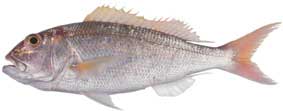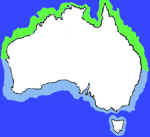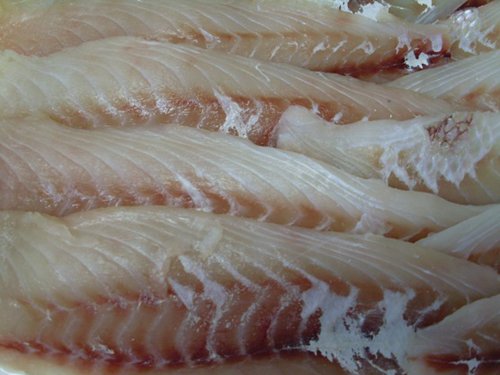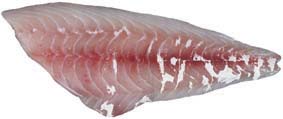|
|
|
|
|
Directory & Info for Fishing,
Angling, Fishing Tackle, Fishing Guides, Fly Fishing, Bass Fishing,
Sports fishing, Game Fishing....
See >>
Info on All types of
Fishing | Angling | Tackle etc
|
| |
|
Glossary of Fish, Seafood and Fishing Terms |
|
|
|
Australian Fish Bag Limits and Size Regulations |
|
Photos of Australian Seafood, Fish, Crustaceans &
Cephalopods and Information on each.... |
|
Abalone, Blacklip |
|
Albacore
Tuna |
|
Baler Shell |
|
Barbounia, Tiny |
|
Barracouta |
|
Barramundi |
|
Bass, Sea |
|
Batfish |
|
Batfish, Silver |
|
Blackfish |
|
Boarfish |
|
Bonito Tuna |
|
Bonito, Watson's Leaping |
|
Bream |
|
Bream, Butter |
|
Bream, Slate |
|
Bug, Moreton Bay
(Slipper Lobster) |
|
Bug, Balmain |
|
Butterfish |
|
Calamari,
Southern |
|
Carp, European |
|
Catfish, Blue |
|
Catfish, Lesser Salmon |
|
Cockles |
|
Cod, Bar |
|
Cod, Blue eye |
|
Cod, Coral Rock |
|
Cod, Ghost |
|
Cod, Maori |
|
Cod, Murray
|
|
Cod, Southern Rock |
|
Cod, Spotted |
|
Cod, Tomato |
|
Cod, Wirrah |
|
Cod, Yellow Spotted |
|
Coral Trout |
|
Cowanyoung |
|
Crab, Blue Swimmer |
|
Crab, Champagne |
|
Crab, Giant
|
|
Crab, Mud |
|
Crab, Spanner |
|
Crawfish |
|
Cuttlefish |
|
Dart Fish |
|
Dolphin Fish |
|
Dory, John |
|
Dory, Mirror |
|
Dory, Silver
|
|
Drummer, Southern |
|
Eel, Longfin |
|
Emperor, Red |
|
Emperor, Red Throat |
|
Flathead |
|
Flounder, Small Toothed |
|
Flutemouth, Rough |
|
Frost Fish |
|
Garfish |
|
Gemfish |
|
Goatfish |
|
Grouper |
|
Gurnard, Red |
|
Gurnard, Spotted |
|
Hairtail |
|
Hump Headed
Maori Wrasse |
|
Hussar |
|
Jackass Fish |
|
Jacket, Ocean |
|
Jacket, Sea |
|
Jewfish |
|
Jobfish, Gold Banned |
|
Jobfish, Rosy |
|
Kingfish,
Yellowtail |
|
Latchet Fish |
|
Leatherjacket, Reef |
|
Ling |
|
Lobster - Eastern
Rock |
|
Lobster - Southern Rock |
|
Long Tom |
|
Luderick |
|
Mackeral, Jack |
|
Mackerel, Slimey |
|
Mado |
|
Mahi Mahi |
|
Mangrove Jack |
|
Marlin, Black |
|
Marlin, Blue |
|
Marlin, Striped |
|
Melon Shell |
|
Monkfish |
|
Mono |
|
Moon Fish |
|
Morwong |
|
Morwong, Red |
|
Mullet - Roe |
|
Mullet, Diamond Scale |
|
Mullet, Red |
|
Mullet, Sea |
|
Mullet, Yelloweye |
|
Mulloway |
|
Mussels Black |
|
Mussels Greenlip |
|
Nanygai |
|
Octopus |
|
Orange Roughy |
|
Oreo, Black |
|
Oyster,
Native |
|
Oyster,
Pacific |
|
Oyster, Sydney Rock |
|
Parrot Fish |
|
Parrot Fish (2) |
|
Perch, Ocean |
|
Perch, Saddle Tail Sea |
|
Perch, Silver |
|
Perch, Splendid |
|
Perch, Stripey Sea |
|
Pig Fish |
|
Pike |
|
Pineapple Fish |
|
Prawn, Banana |
|
Prawn, King |
|
Prawn, Red Spot |
|
Prawn, School |
|
Prawn, Tiger |
|
Queenfish, Needleskin |
|
Rainbow Runner |
|
Redclaw Crayfish |
|
Redfish |
|
Ribaldo |
|
Ribbon Fish |
|
Rudder Fish |
|
Salmon, Atlantic |
|
Salmon, Australian |
|
Scad |
|
Scallops,
Queensland |
|
Scallops, Tasmanian |
|
Scorpion Fish, Raggy |
|
Shark |
|
Shark Black Tip |
|
Shark, Blue |
|
Shark Bronze Whaler (Dusky) |
|
Shark, Bull |
|
Sharks Fins |
|
Shark, Gummy |
|
Shark, Mako |
|
Shark, School |
|
Shark,
Tiger |
|
Shark,
Whiskery Reef |
|
Shark, White |
|
Shrimp, Mantis |
|
Sicklefish |
|
Silver Biddy |
|
Snapper |
|
Snapper, Big Eye |
|
Snapper, Fry Pan |
|
Snapper, Gold Band |
|
Snapper, King |
|
Snapper,
Red |
|
Snapper, Red Tropical |
|
Sole |
|
Sole, Tongue |
|
Squid, Arrow |
|
Squirrel Fish |
|
Stargazer |
|
Stingray, Butterfly |
|
Stripey Sea
Perch |
|
Surgeonfish, Sixplate Sawtail |
|
Sweetlip, Slatey |
|
Sweetlip, Yellow |
|
Swordfish |
|
Tailor |
|
Tarwhine |
|
Tilefish,
Pink |
|
Trevally, Big Eye |
|
Trevally, Golden |
|
Trevally, Silver |
|
Triple Tail |
|
Trout |
|
Trumpeter, Striped |
|
Tuna,
Albacore |
|
Tuna, Bigeye |
|
Tuna, Bluefin |
|
Tuna, Longtail |
|
Tuna, Skipjack |
|
Tuna, Striped |
|
Tuna, Mackerel |
|
Tuna, Yellowfin |
|
Venus Tusk Fish |
|
Whiting, Sand |
|
Whiting, School |
|
Wrasse |
|
Yabby,
Freshwater Crayfish |
|
Yellowtail |
|
FULL LIST of Fish &
Seafood |
|
Beche De Mer
(Sea Cucumber - Trepang) |
|
Amberfish |
|
Blackfish |
|
Black Teatfish |
|
Brown Sandfish |
|
Curryfish |
|
Elephants Trunks fish |
|
Greenfish |
|
Lollyfish |
|
Pinkfish |
|
Prickly Redfish |
|
Sandfish |
|
Stonefish |
|
Surf Redfish |
|
White Teatfish |
|
|
|
Commercial Seafood
Directory |
|
Sea-Ex Seafood, Fishing, Marine
Directory |
|
Aquaculture Directory |
|
Seafood
Trading Board |
|
Commercial Fishing |
|
Seafood Information by
Country |
|
Fish Photos & Fish
Information |
|
Interesting Fish Facts & Trivia |
|
Country Directories |
|
Thailand Business
Directory |
|
Seafood
|
|
Wholesale Seafood
Suppliers Australia |
|
Wholesale Seafood
Suppliers International |
|
Retail Seafood
Sales |
|
Seafood
Restaurants |
|
Seafood
Recipes |
|
Seafood
Information |
|
Seafood
Industry Resources |
|
Sea-Ex Seafood & Fishing
Directory -
Home Page |
|
Gold Band Snapper
(Pristipomoides multidens) Photographs
and Information
|
Also known as Gold Band Jobfish or
Golden Snapper.
Gold Banned Snappers are deepwater fish inhabiting tropical and sub-tropical waters.
They are characterised by having the last ray of their dorsal and anal fins much
longer than the preceding rays, and by the absence of scales on the bases of their dorsal
and anal fins. Pectoral fins are much longer than the snout length.
Gold Band Snapper have 2-3 orange-yellow stripes on their snout and under their eyes
and there are thick yellow transverse stripes or markings between their eyes.
Gold Band Snapper are generalised, opportunistic carnivores. They feed both on
the sea floor and in the water column. Gold band snapper feed on fish, crustaceans
(including prawns and crabs) and squid as well as pelagic items such as gastropod
molluscs.
Gold band snapper are caught by demersal otter trawling and some semi-pelagic otter
trawling. Also dropline and wire-meshed traps. The greatest catches are made
during early winter (April-June)
Seven trap designs have been used, the most successful being single entrance round
traps and arrow traps and Western Australian "D" or square traps. The
traps are baited with oily fish, mostly pilchards. The traps are set in water
100-140 metres deep and soak times vary from 0.5 to 10 hours - generally shorter during
the day and longer overnight. After hauling, the traps are rebaited and set if
catching is going well.2
Droplining hooks are baited with squid, pilchards or cuttlefish.
Gold Band Snapper are generally sold fresh, chilled or frozen wither as whole fish,
gilled and gutted fish or fillets. Trawled Gold Band Snapper fetch lower prices than
droplined snapper.
|
 |
 |

Tropical snappers belong to the family
Lutjanidae, along with red emperor and seaperches.
|
| Scientific Name |
Pristipomoides multidens |
| Location |
Northern half of Australia |
| Season |
All year round |
| Size |
To 90 cm, 5.8 kgs |
| Australian Species Code |
37 346901 |
| Taste, Texture |
Delicate to mild taste. Firm texture. |
|
Nutritional
Information
For every 100 grams raw product
for Snapper fillet. |
|
Kilojoules |
404 |
|
Cholesterol |
- |
|
Sodium |
85 mg |
|
Total fat
(oil) |
1.60 g |
|
Saturated
fat |
0.60 g |
|
Protein |
20.30 g |
|
Polyunsaturated fat |
- |
|
Omega-3, EPA |
- |
|
Omega-3, DHA |
- |
|
Omega-6, AA |
- |
|
|
Angling for Snapper | Snapper
Fishing
:
Snapper are structure
dwellers, they feed over particular areas of reef, gravel or
broken bottom and to catch them consistently, offshore anglers
must know some of these places. Snapper can be found over a
range of habitats although most of these locations have a hard
bottom. High profile reefs are the first choice in most areas.
The edges around the reef, particularly the place where hard
reef meets mud or sand are always very likely snapper spots. The
reef itself is also a good location as snapper will work over
most of the reef. Broken bottom featuring gravel, or mud and
rock are also highly productive. These rubble areas seem to be
favoured by intermediate class fish from just legal up to two
kilograms.
Snapper will take a very
wide range of baits including prawns, squid, pilchards,
fish fillets, shellfish and live baits. The pick of the baits
are fresh squid, fillets of striped tuna, frigate or slimy
mackerel cut into strips and blue pilchards. If the snapper
won't take these baits then they're just not on the bite.
When hooked, Snapper offer
a fight of a lifetime. A correctly set drag prior to hookup is
crucial, as Snapper will run upon feeling the hook. On average,
a 12 kilogram Snapper takes about 20 minutes to reel in, and you
can tell when they are getting tired, by their characteristic
bumping and shaking of its head. This sometimes indicates a
prelude to another run. When the Snapper has broken the surface
of the water, gaff it cleanly thru the gills if it is a large
one, and use a hand net, if it is a rugger.
Use main line between 10
to 15 kg. If fishing for the larger variety, use a 25 kg trace.
A rod around 1.8m is ideal for boat fishing.
Saltwater Fish -
What bait to use for fishing - a list of
saltwater baits with the main "diners" who will be tempted.
|
|
Cooking
Goldband Snapper:
 Snapper comes in many
sizes, making it very versatile. It is excellent as
a buffet piece, whole, filleted or as cutlets.
Snapper is superb smoked and is also becoming
popular for sashimi. A mild to medium flavoured firm
flesh with a low oil content. There are only a few bones and
these are easily removed. Great for BBQing, Pan frying,
grilling and steaming. Snapper comes in many
sizes, making it very versatile. It is excellent as
a buffet piece, whole, filleted or as cutlets.
Snapper is superb smoked and is also becoming
popular for sashimi. A mild to medium flavoured firm
flesh with a low oil content. There are only a few bones and
these are easily removed. Great for BBQing, Pan frying,
grilling and steaming.
Poached Goldband Snapper, served
cold with a tomato and cucumber salsa, is best matched with
bitter greens and a lemon vinaigrette.
These species are often confused with the
snapper (Pagrus auratus) and, although they can be prepared
in similar ways, are best suited to methods and flavours
recommended for
coral trout.
Try roasting goldband snapper with a tasty
baste of soy sauce, teriyaki sauce, coriander and chillies.
Goldband snappers of superior quality can be used for sushi and
sashimi.
Recovery Rate for Fillets: 44% from whole
goldband snapper

Tropical Snapper, Gold Band Snapper Fillet
Size and Weight
Commonly 600g-1.5kg and 30-45cm, but can grow to 4kg and 58cm.
Price
Medium priced.
To Buy
Sold mainly whole (gilled and gutted) and occasionally in fillet
form (usually skinned). In whole fish look for lustrous skin,
firm flesh, and a pleasant, fresh sea smell. In fillets, look
for yellowish-white, firm, lustrous, moist flesh without any
brown markings or oozing water and with a pleasant fresh sea
smell.
To Store
Make sure whole fish is scaled, gutted and cleaned thoroughly as
soon as possible (completely remove the lining of the abdominal
cavity and the white fat along the abdominal wall). Wrap whole
fish and fillets in plastic wrap or place in an airtight
container. Refrigerate for up to 3 days or freeze whole fish for
up to 6 months, and fillets for up to 3 months, below -18ºC.
To Cook
Average yield is 35%. Has a mild, sweet flavour, low oiliness
and moist, soft-medium flesh.
Cooking Methods
Steam, poach, pan-fry, bake, grill, barbecue. A good plate-sized
fish cooked whole, flesh also works well in mousseline.
Microwave Cooking Times for Fish
- Fish fillets – 5 minutes per 500g on medium-high, +50
seconds more for thicker fillets, or until flesh flakes
- Whole fish - Large – 6 minutes/750g on medium
- Whole fish – Small – 3-4 minutes on medium
|
Colour of Raw
fillet: |
White to pale pink. |
|
Texture:
|
Firm. |
|
Fat Content: |
Medium. |
|
Flavour: |
Delicate, sweet to mild.
|
SNAPPER
RECIPES

Tropical Snapper, Gold Band Snapper
Fillet
Recipes Suitable
for this fish:
|
|
Commercial Fishing for Goldband Snapper: Wild caught
Droplining hooks are baited with squid, pilchards or cuttlefish.
Recovery Rate
Fillets: 48% from whole king snapper and 44% from whole goldband snapper
Commercial operators are authorised to use baited traps
and vertical lines, including hand lines and drop lines. Prior to 1999, most
operators in the fishery used drop lines. During 1999-2000, there was an
industry-wide change to trap fishing, with only one operator using drop lines in
2002. In 2004, there was a reversal of this trend when many operators went back
to drop lines; but by 2009, most operators were again using traps. In 2010, one
vessel used drop lines and six vessels used traps, reflecting the developing
nature of the wider fishery grounds.
Catch
Gold-band snappers are the principal target of the fishery, comprising the three
species Pristipomoides multidens, P. typus and P. filamentosus. Together, they
comprise 52% of the total catch (Figure 2), with P. multidens being the most
common. Other key species caught in the fishery are saddle-tail snapper (Lutjanus
malabaricus), crimson snapper (L. erythropterus), red emperor (L. sebae) and
cods (Family Serranidae) (Figure 2). There was very little change in 2010 in the
species composition from 2009.
By-product species made up 9% of the overall catch in the fishery. As well as red
emperor (Lutjanus sebae), by-product species include small snappers (such as L. russelli and L. lemniscatus) rock cods (such as Epinephelus areolatus), emperors
(such as red spot emperor, Lethrinus lentjan) and Robinson’s sea bream (Gymnocranius
grandoculus).
Exporters, Importers & Processors, Wholesale &
Agents of Snapper - - Worldwide Trade
Seafood Industry Directory of companies and contacts
who are Exporters, Importers & Processors, Wholesale
& Agents of Snapper
More links about
Goldband Snapper information
Australian Government - Australian Bureau of Agricultural and Resource Economics
and Sciences (PDF file) - Australian Fisheries Statistics 2010/2011
|
|